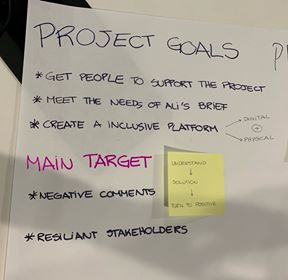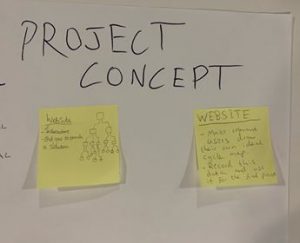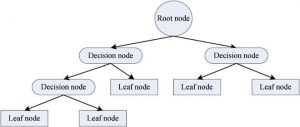Log week 4
This week we followed up on our idea of taking a site visit to Heaton Road here we managed to talk to a few of the locals and gather some ideas of how they felt about the project. Most of them seemed to be happy with the idea of a cycle lane although these people claimed to be cyclists themselves so it coincides with the data we found on the website ‘streets for people’ (51% wanted segregated cycle lanes). A couple of the people we spoke to said they were drivers of cars and would struggle with the addition of a cycle lane, due to the lack of parking spaces that would become a reality once the lane was installed.
Our Inspirations
This research was inspired by a project we found in the Netherlands about How to turn a Car city into a Cycling city*. As most of the cities (both in this project and in general) were planned and designed for the car, the first thing that had to be done was “appeasing the motorists instead of encouraging cyclists”. As we have written before, Heaton Road is very “car-occupied”, which makes this reference project very relevant to our own project. It has inspired us to do more further research into their ideas and how ours could relate seen as they were successful.
We also found this article** useful which was suggested to us by Sean. After reading through it we understood more about the concept of a “smart city” and how GPS, as well as other GIS tools, could be used to track the main cycle routes within an area. We were then also able to recognise the divide between the East and West were the West had hardly any cycle routes in comparison potentially down to the development of transportation and wealth of the area.
We spoke during the lecture about how negative comments would impact us and the project, and we have decided that negative comments would be our main target and we would focus on understanding them more and persuading the people to change their opinion. This is now one of our main project goals, alongside meeting the needs of the briefing given by Ali and creating a interactive/inclusive platform.
Our Concept


We also began to come up with a concept for our project although we feel that we will be able to adapt this more after talking to the other project partners (Mark and Julie). One of the concepts was the idea of getting cyclists to map their ideal route and recording this information, then putting it into a map of sorts to show how useful the cycle route would be by connecting Heaton Road to other/ smaller cycle paths. The other concept was a interactive Decision Tree, we would make several questions which would have multiple answers provided already to choose from, leading to more questions, eventually ending up with one final answer, which would be an end goal of the cycle route being the best option for all users. This would be an online concept but we would also be able to make it as an interactive poster for people without access to the internet.

This is an example of the format of a Decision Tree, although we believe ours would be larger. The “leaf nodes” would be one final answer for the participants.
Next week we are planning to visit Heaton Road again and to interview some of the stakeholders to get a wider range of views on the project and hopefully to begin to build upon our concept idea. We are also meeting the project mentor so hopefully we will gain some insight into their thoughts on the project and some much needed experience in the area. We also have our meeting with Mark and Julie arranged although due to unforeseen circumstances this has been set back slightly.
References
*Link to reference project: https://nextcity.org/features/view/how-to-turn-a-car-town-into-a-cycling-city?fbclid=IwAR1ckGS1GZ-tyq5lrf_wh3yy4qd2owdLhLYOgG5topXSbMKYfzJ3AWH0ZMY [Online: Accessed 19-02-2019]
**Link to article:
https://ledantec.net/wp-content/uploads/2014/09/Le-Dantec-Planning-with-Crowdsourced-Data-CSCW15.pdf?fbclid=IwAR3FHHvqkw5f5ue3geihm0nwpHWlHdQmQyg-B_AhsobTz_BtbLac7kzeLQg [Online: Accessed 19-02-2019]
Hi folks, thanks for the entry for week four…. from your post, I see some ideas coming through as to what focus to put in your project. The focus on ‘negative comments’ is an interesting one which you could perhaps further explore and reflect in light of the literature on digital civics. How does this idea of ‘negative’ comments relate back to our first lecture and the ideas on relational ways to engage? Digital civics, to some extent, is about communities gaining awareness of each other, by facilitating how people find other people with shared interest from the wider public. What is a bad idea from one person, may be a great idea for another… From this, I wonder how you might bring different views into conversation with each other?
In the seminar, we also considered how you might find inspirations. The CommonPlace tool seemed to have been another inspiration for you and could be mentioned here… Also to explain your focus on negative comments… The decision tree is an interesting example, but I wonder if you could perhaps find an example of a service that incorporates this. For instance, check out this study here:
https://journals.plos.org/plosone/article?id=10.1371/journal.pone.0123483
Your decision tree model suggests a level of iteration, and perhaps the development of common solutions, perhaps voting at key stages… Can you find examples of innovative engagement approaches in transport planning, which may give you an idea of potential stages underlying engagement. Would you possibly benefit from an example from gaming, where levels are commonly used to indicate ‘stages of achievement’…
Perhaps have a look for ideas from “serious games”:
https://www.researchgate.net/post/Could_someone_suggest_me_some_interesting_examples_of_serious_game_related_to_urban_and_transport_planning
Also this here looks interesting: https://crowdsourced-transport.com
Finally, what about examples for innovative ways to present any proposals: There is a wide range of presentational methods that could be considered here: maps, models, computer graphics, perhaps images of initiatives from elsewhere… and then also different ways of experiencing and engaging: from desktop-based, mobile-phone-based, VR / AR on the phone, etc. It would be good if you could perhaps look for a few more services & systems that give you inspiration in that regard, too.
In your final user research activities, try to define some of the user requirements for possible service. As you mentioned in your seminar, the council has made their decision to plan Heaton Road in the way they have. Try to zoom out a bit and consider your design concepts in the light of other similar schemes that may happen in the future… This may give you a bit more freedom to finalise your ideas.
I look forward to see how your thinking develops.
Hi team, thanks for your post. Sebastian’s comments are detailed so I don’t have too much to add, but I would just make sure that you are consistent in your project aims, at least from this point forward. I think you are taking a good approach, but I know when we have previously spoke, you have suggested that you will ignore those who could never be convinced and instead trying and convince those who are a bit more uncertain. So just make sure your message stays clear from this point forward, as you could end up confusing yourself! And as we discussed last week, and building on Sebastian’s comments, think about: (1) how you will interpret what is negative and what is positive as is likely that it will not be this binary (e.g. I don’t like it but I would if…); (2) the role that both positive and negative comments can play in strengthening the project; and (3) how you will bring the comments into contact with one another, leveraging the possibilities offered by digital tech. Indeed as you do this you may find that you actually take a step back and simply provide a platform for the community to discuss amongst themselves, if that makes sense? And this is very much what I would interpret as digital civics. Anyway, good work.